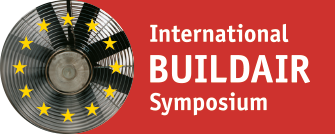Establishing an airtight building envelope requires both materials for the surfaces and joining materials for the airtight sealing of joints between components and penetrations, as well as splices and overlappings. In wooden structures, airtight sheeting or sheeting materials are generally used as an air barrier on the surface. Any splices and overlappings are generally bonded with adhesive tape. Joints at adjacent components are often created using paste-like adhesive compounds. DIN 4108-7 (airtightness of buildings) provides a large number of examples of joints with adhesive bonds. Although these naturally play a crucial role, the joining materials must guarantee a durable air seal through bonding. For a long time, adhesive technology for establishing airtightness was entirely unregulated in terms of adhesive bonding and durability.
For example, any adhesive tape could basically be used for airtight bonding without any specifications or verifications.
In November 2018, DIN 4108-11 (minimum requirements for the durability of bond strength with adhesive tapes and adhesive compounds for the establishment of airtight layers) was published. For the first time, this standard establishes test procedures and specifications regarding the strength and durability of adhesive technology in a technical regulation.
Based on DIN 4108-11, tests can be performed on reference substrates (defined plastic sheeting and beechwood) with and without artificially accelerated aging. In addition, system tests can be performed using system sheeting associated with the adhesive product. It is also possible to test systems that comprise combinations of layers of joining material sheeting.
The test specimens are produced under defined conditions (temperature, moisture, and duration) and specified surface pressure. Next, or after accelerated aging, dynamic peel tests are performed using a tensile testing machine. Another test qualifies the durability of bond strength when subjected to static stress at a higher temperature.
For peel strength, DIN 4108-11 defined minimum bonding values that adhesive tape and adhesive compounds must comply with according to the standard.
The standard also includes specifications for product labeling that provides planners and processors with application security.
It should be emphasized that testing the initial bond of adhesive materials is not part of the standard, because it is inconclusive regarding the final strength of bonding.
At this time and in the near future, it appears that it will not be mandatory that adhesive materials for establishing airtight joints comply with DIN 4108-11. Nevertheless, a number of manufacturers have already tested and validated appropriate joining technology in accordance with the requirements of the standard. This means that building owners, processors, planners and experts can refer to a common standard when evaluating, selecting and tendering out adhesive tapes and compounds.
Note
For more information, please contact the reference author at: stefan.hueckstaedt@proclima.de





